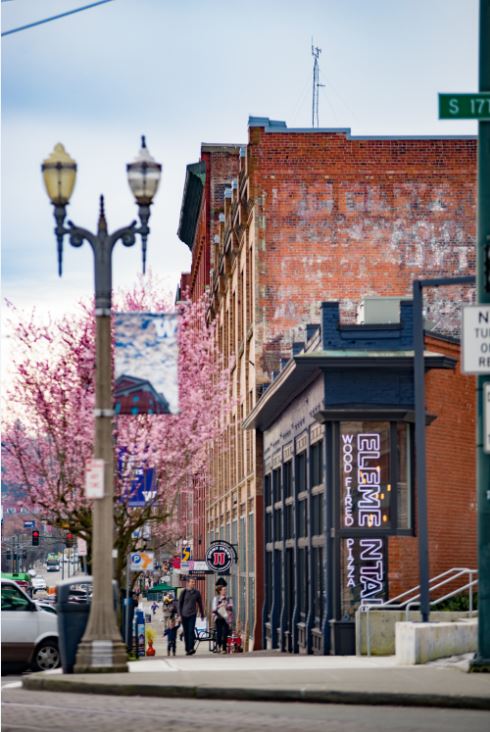Tacoma's Historic Districts
Historic districts are areas of the City that have been determined to possess special
character, related development patterns, of an environment specific to a period of time.
Tacoma has nine historic districts, including four that are listed on the local Tacoma Register (TR), eight that are listed on the National Register of Historic Places (NR), and eight that are listed on the Washington Heritage Register (WR).
Pending Historic District Nominations
College Park Historic District page
Washington State Heritage and National Register Historic Districts
Areas that are listed on the Washington State Heritage Register must be nominated and approved by the Governor's Advisory Council on Historic Preservation. For districts to be nominated to the National Register of Historic Places, the nomination is reviewed by the Landmarks Preservation Commission, the State Historic Preservation Officer, and the Governor's Advisory Council on Historic Preservation. If the nomination is successful at the local and state level, a recommendation is forwarded to the federal Advisory Council on Historic Preservation. Neither state nor federal listing creates restrictions on private property owners, apart from demolition review.
Exceptions include:
- Projects that involve federally or state-owned properties
- Projects funded using federal or state funds
- Properties subject to Shoreline permits, SEPA, or federally required permits.
Tacoma Register Historic Districts
Local historic districts are listed on the Tacoma Register of Historic Places through a nomination process. If the Landmarks Preservation Commission approves the nomination, the recommendation for district establishment is referred to the Planning Commission, which may recommend City Council create a new overlay historic zoning district. This overlay introduces certain protections for historic districts by implementing a process (see Chapter 13.07 of the municipal code). Below is a list of historic districts in Tacoma: